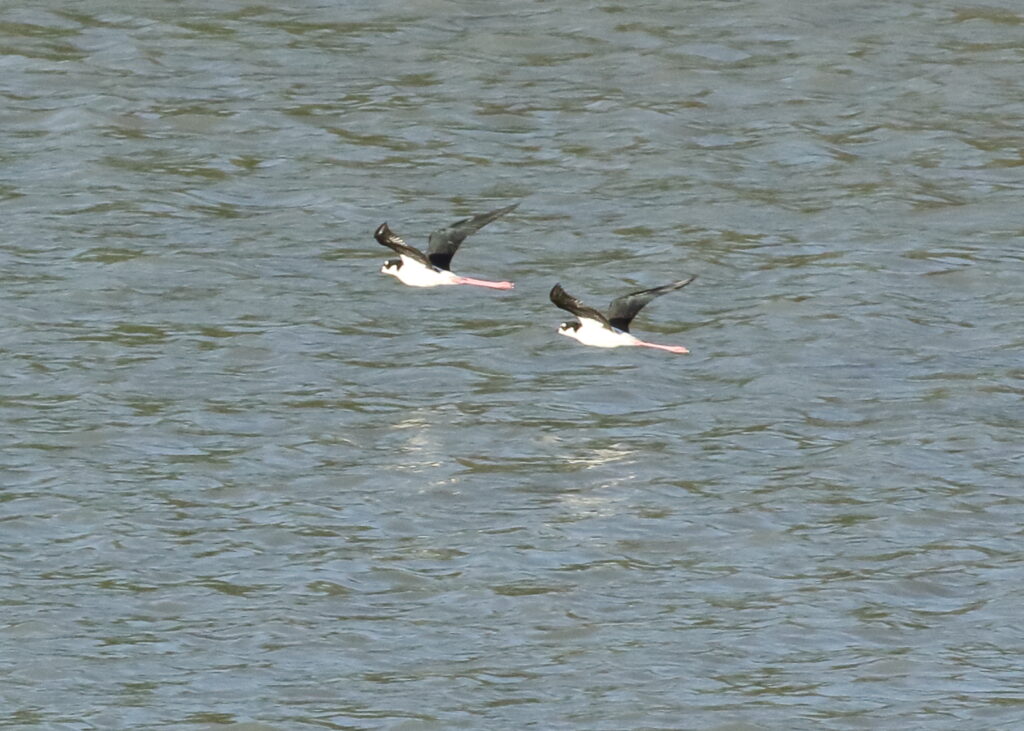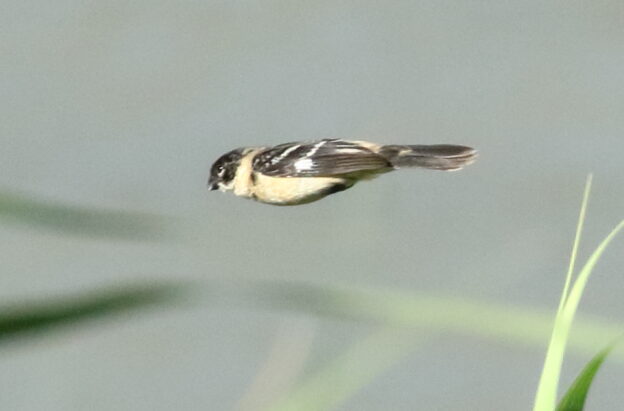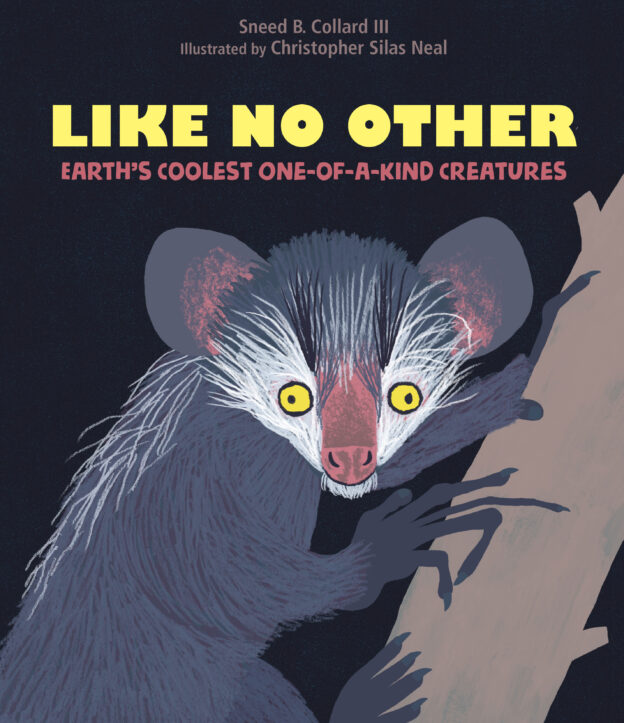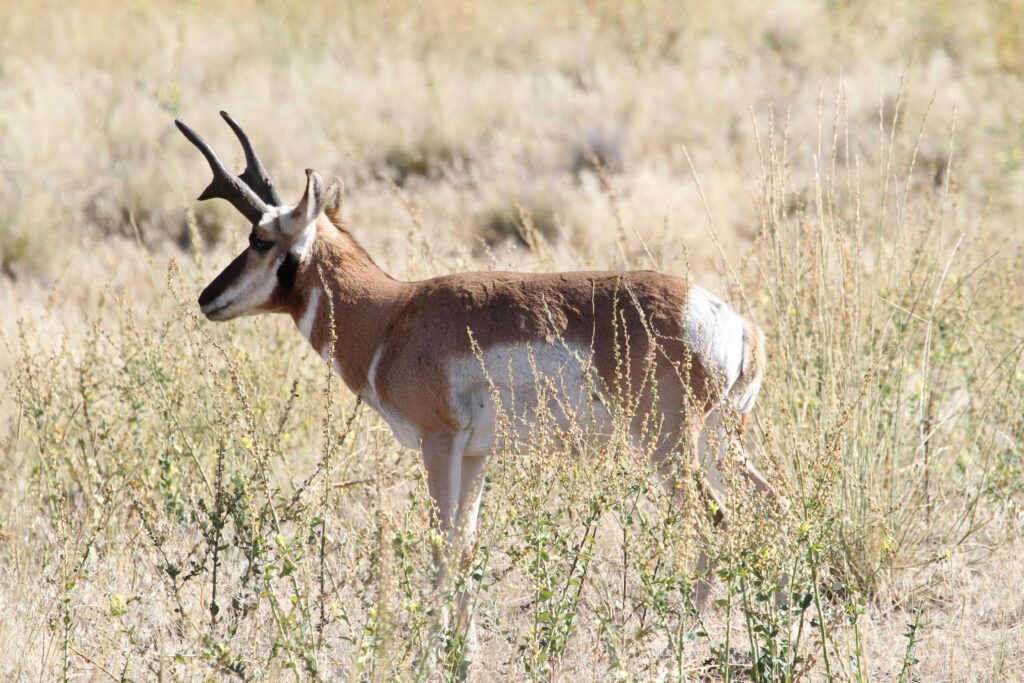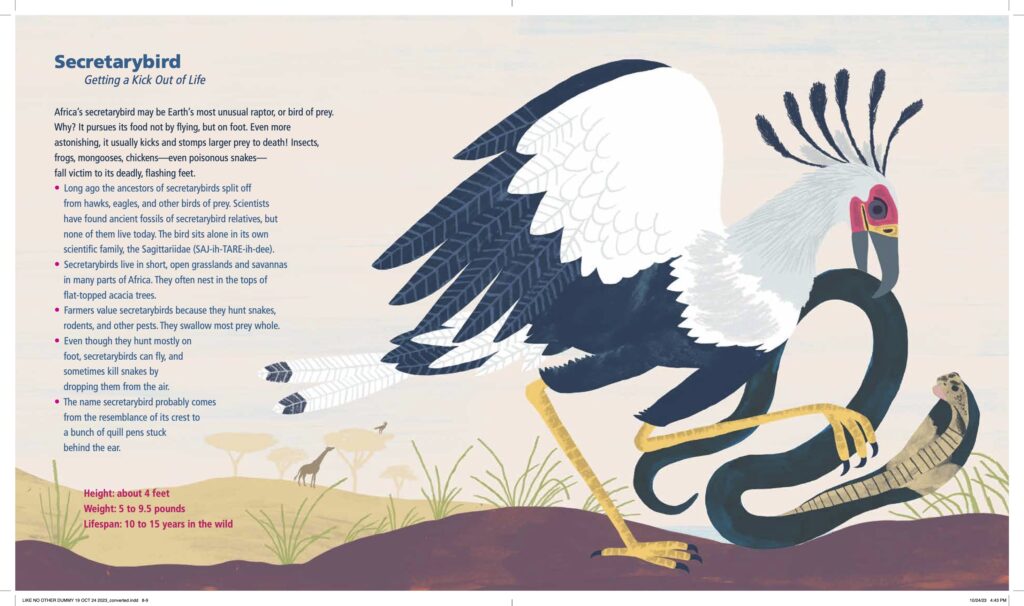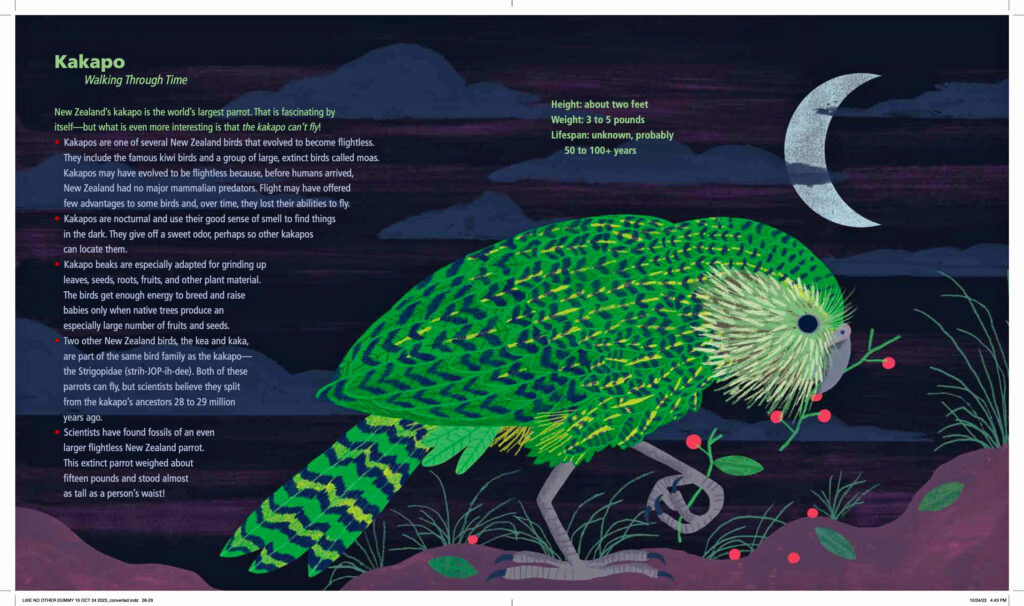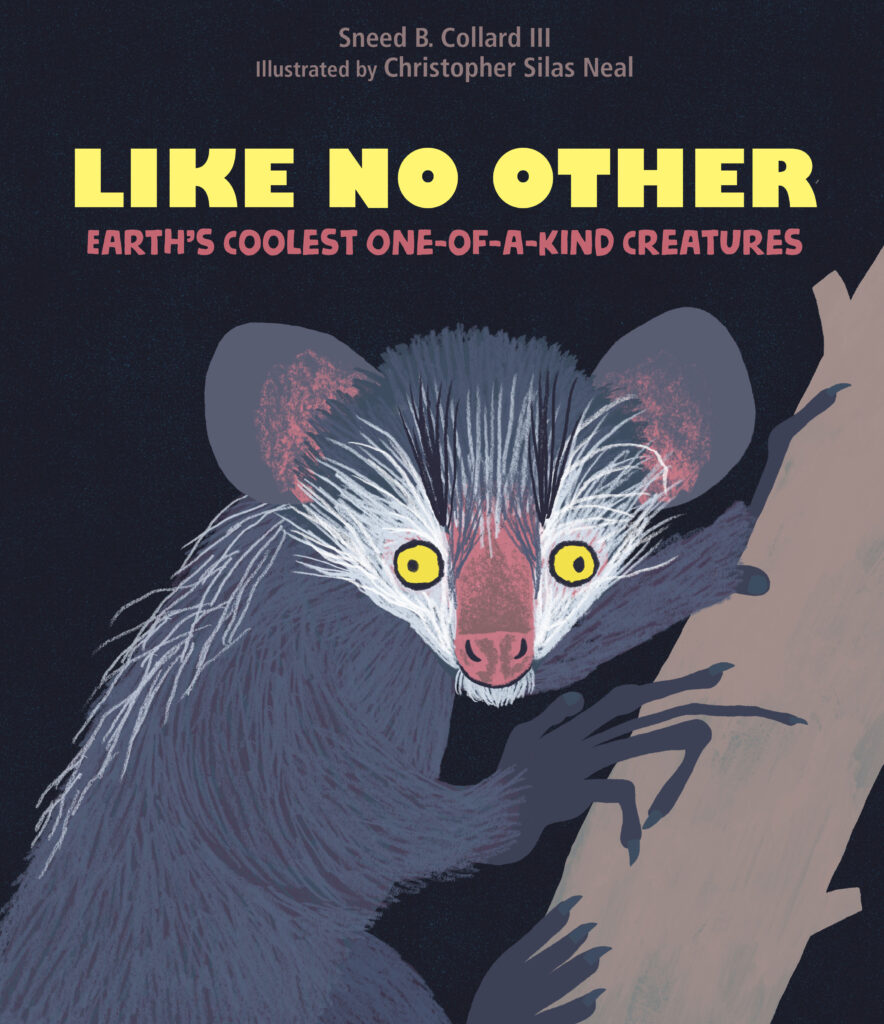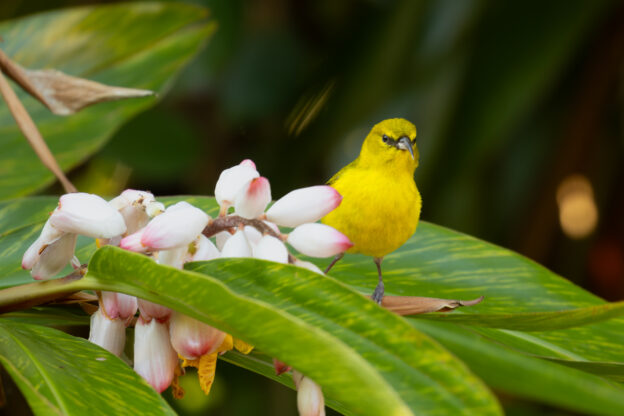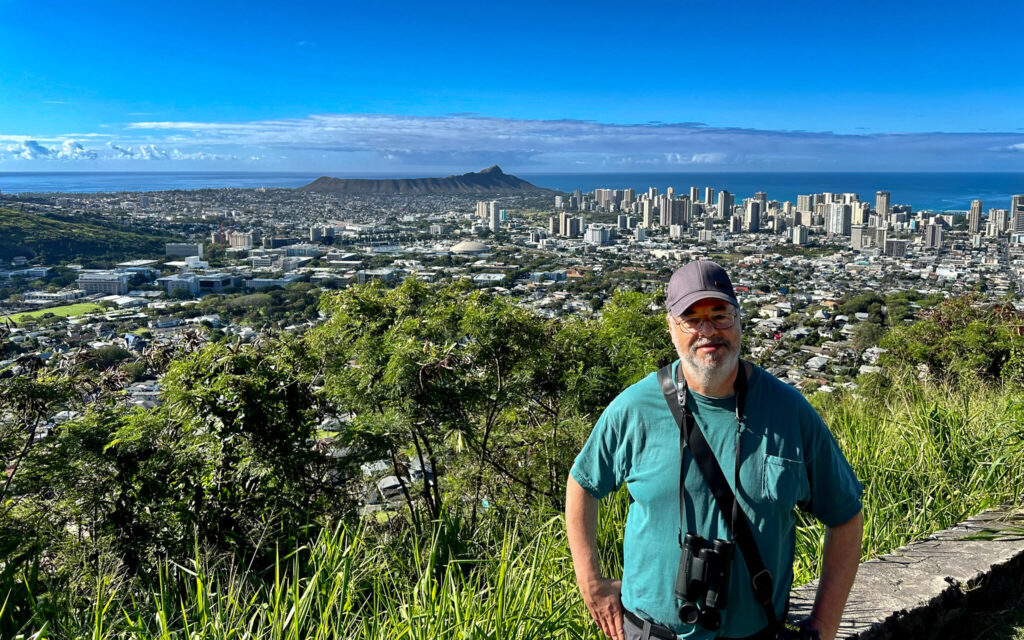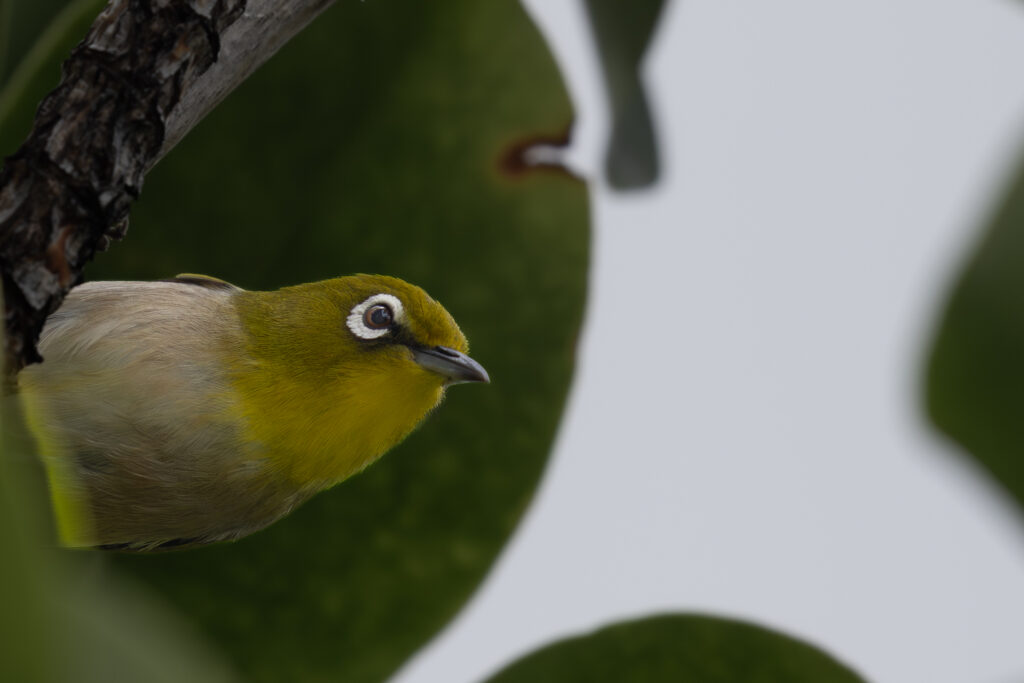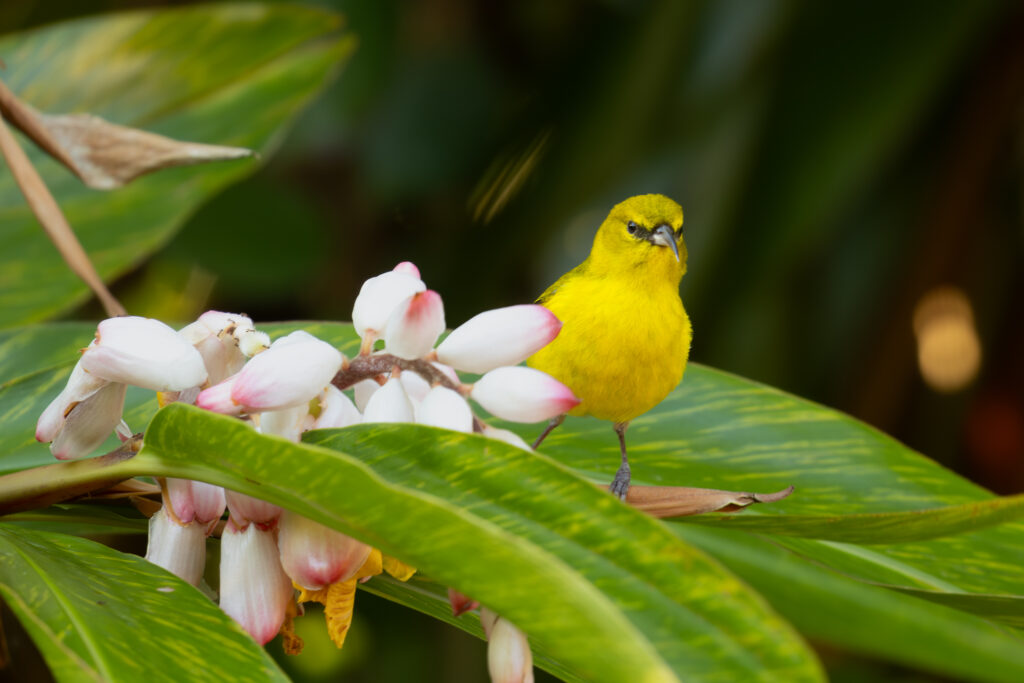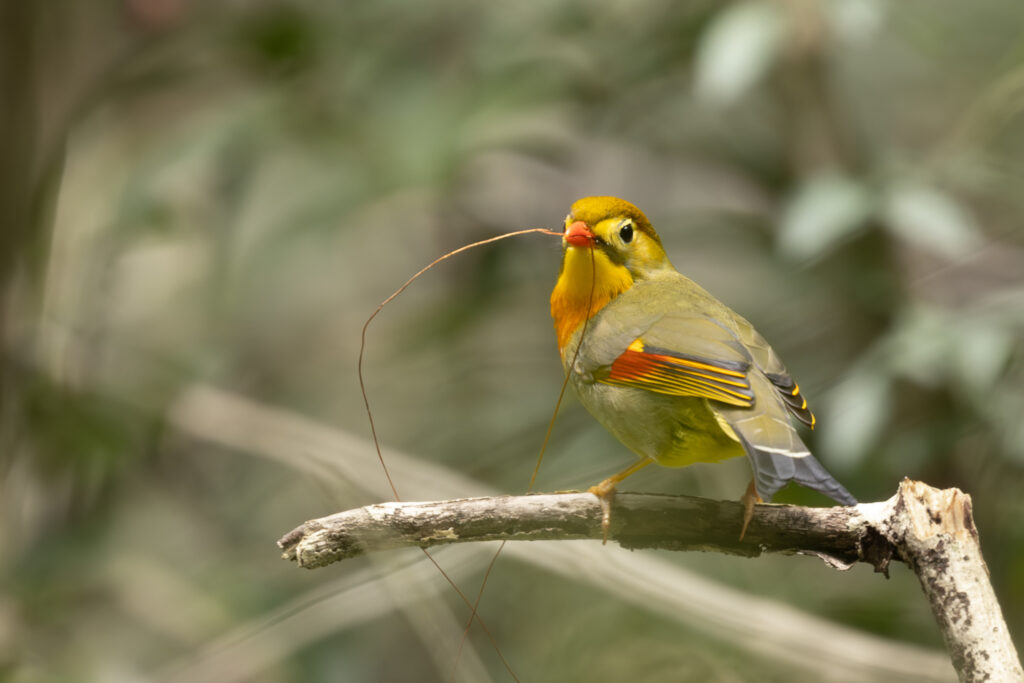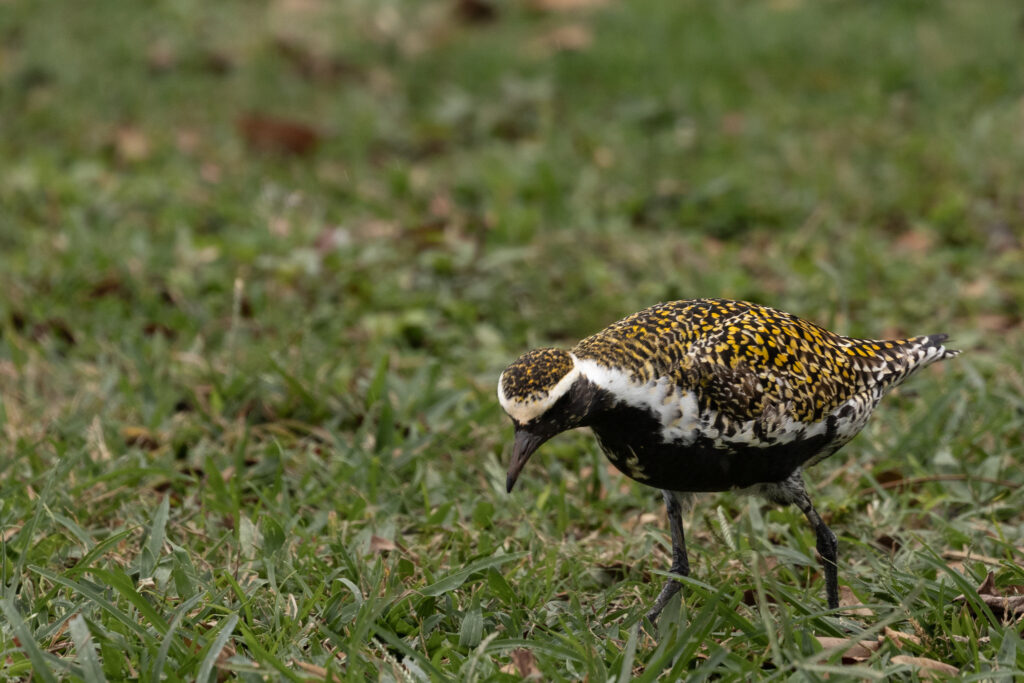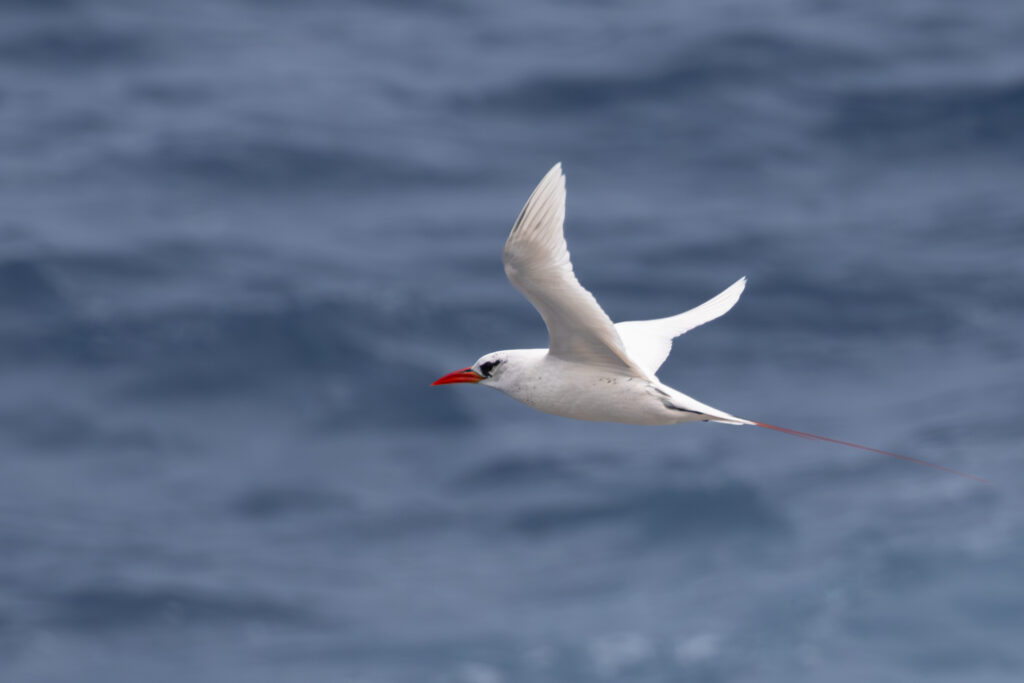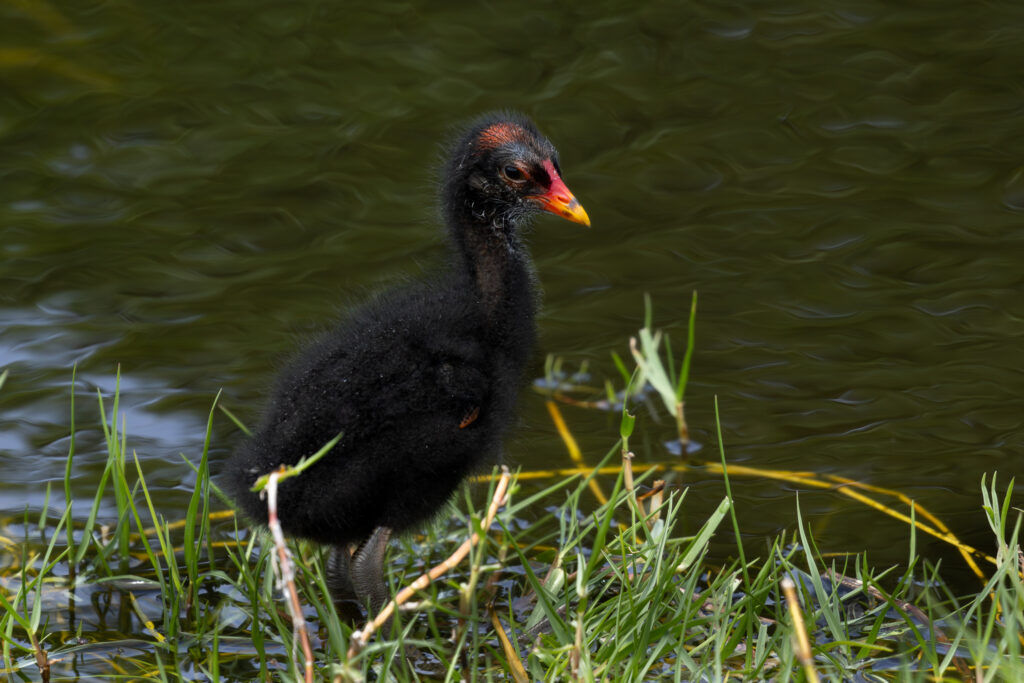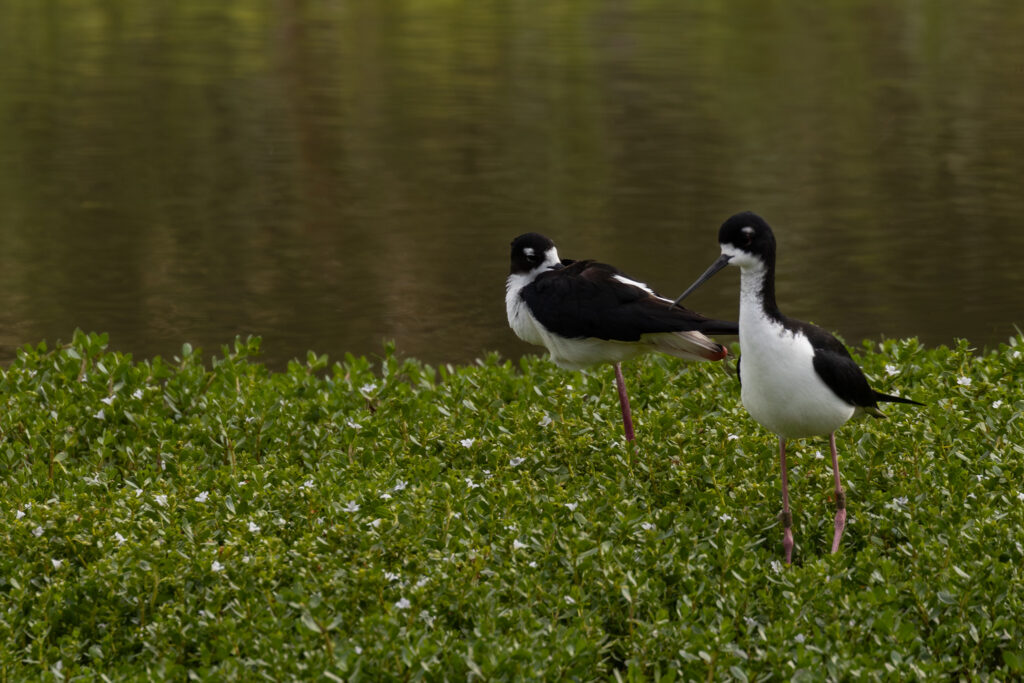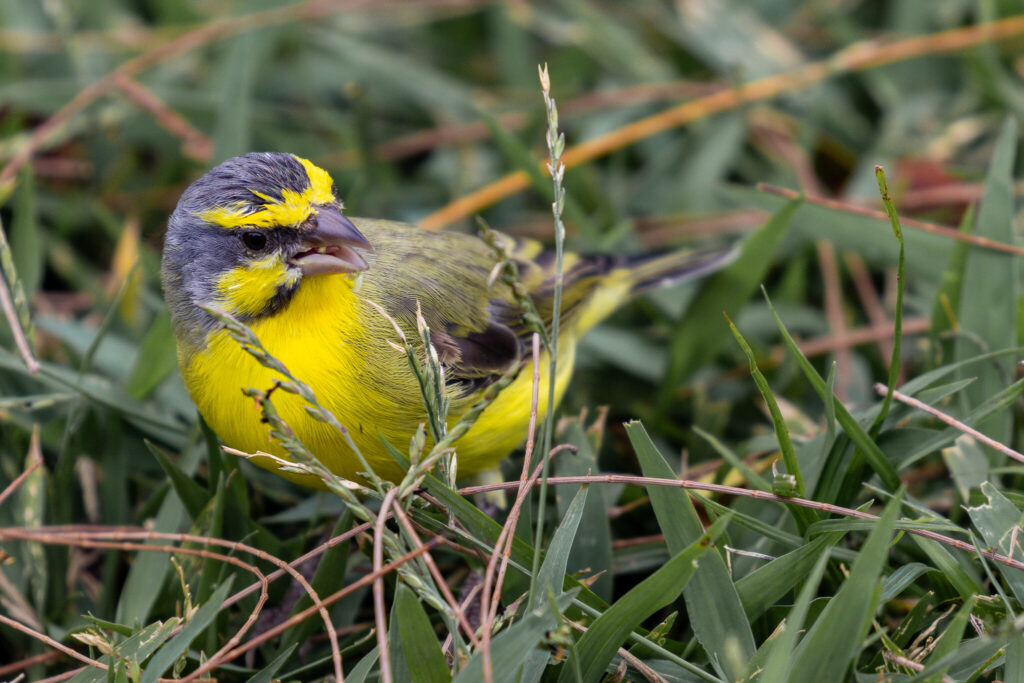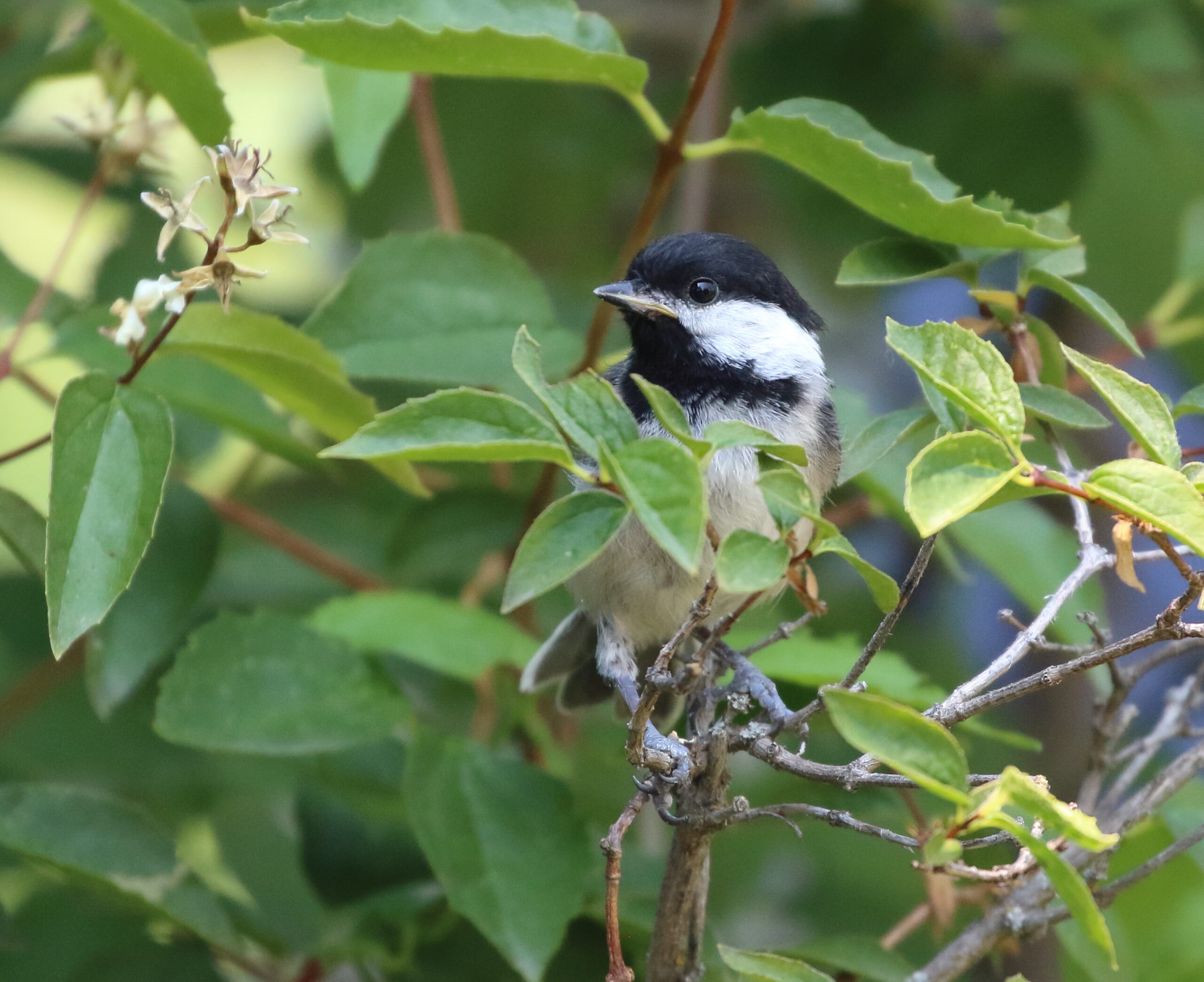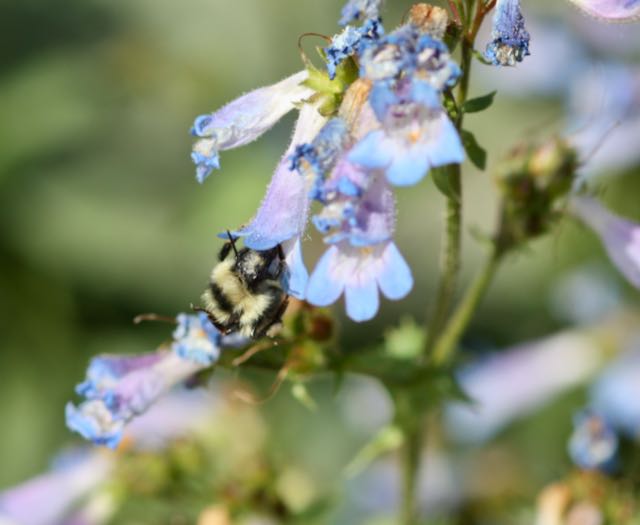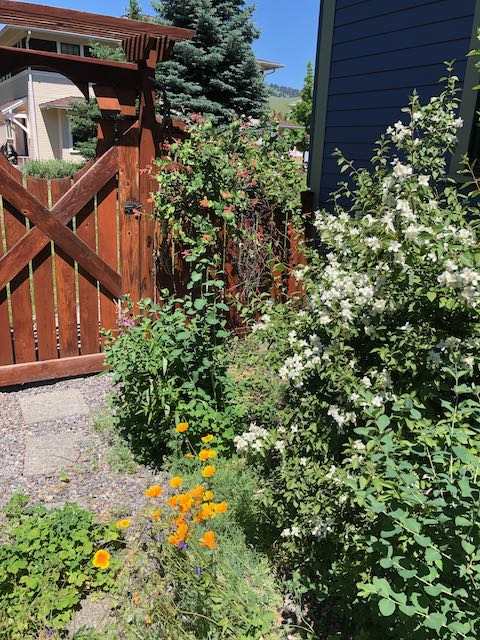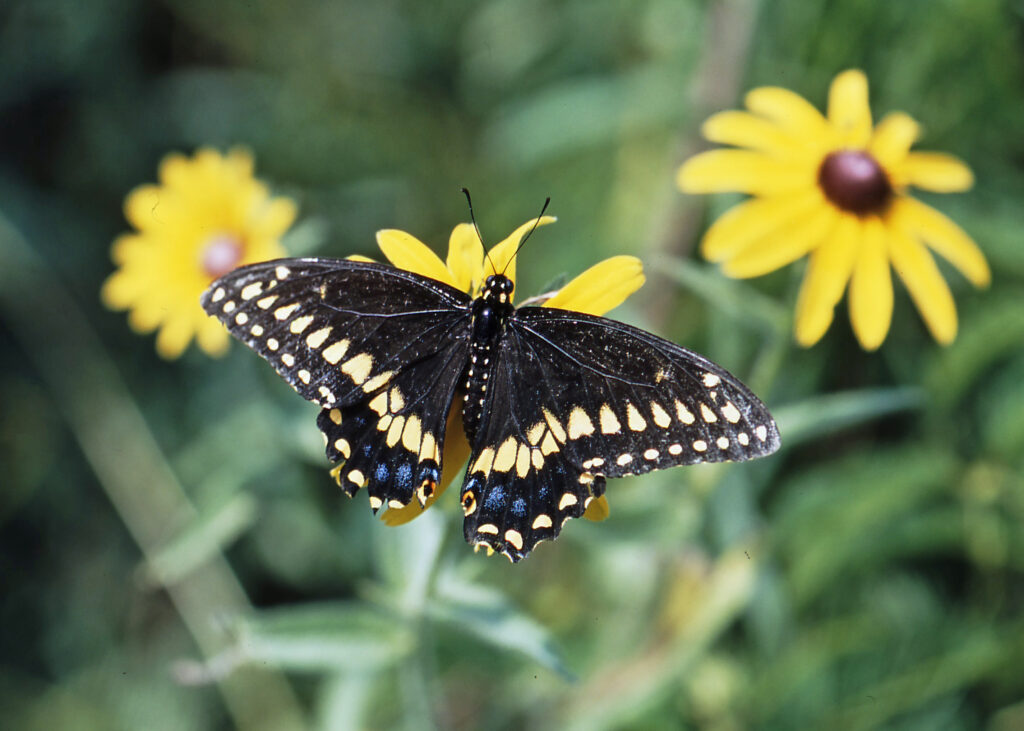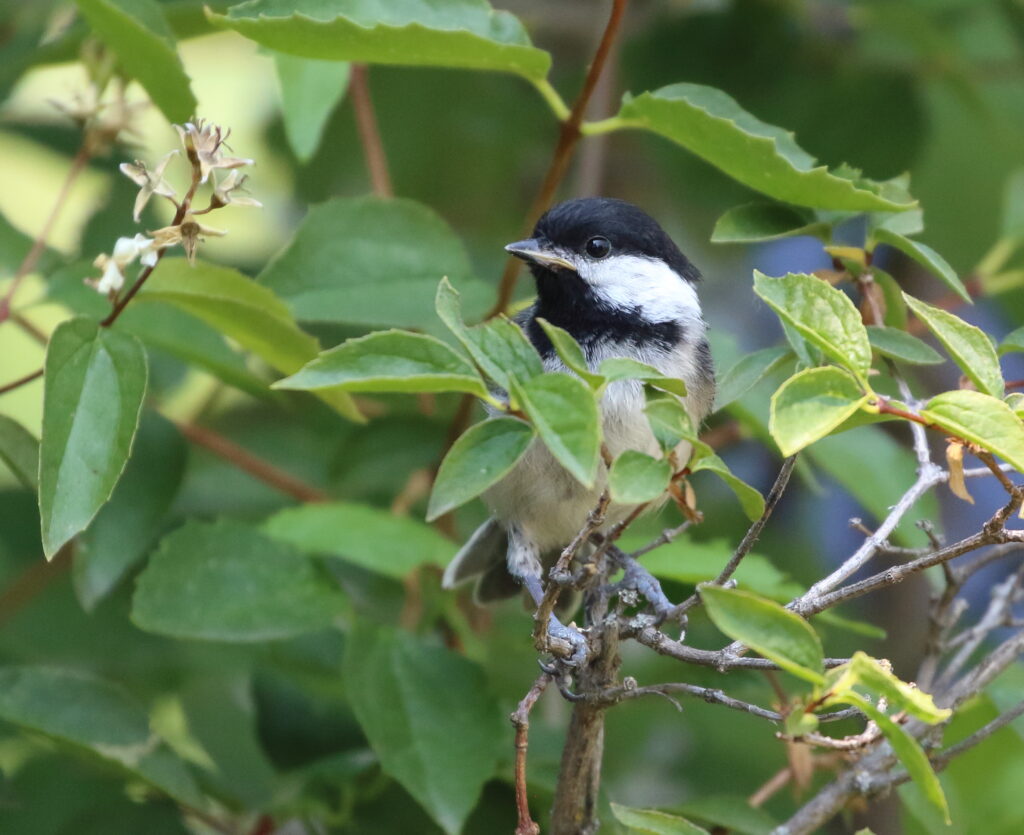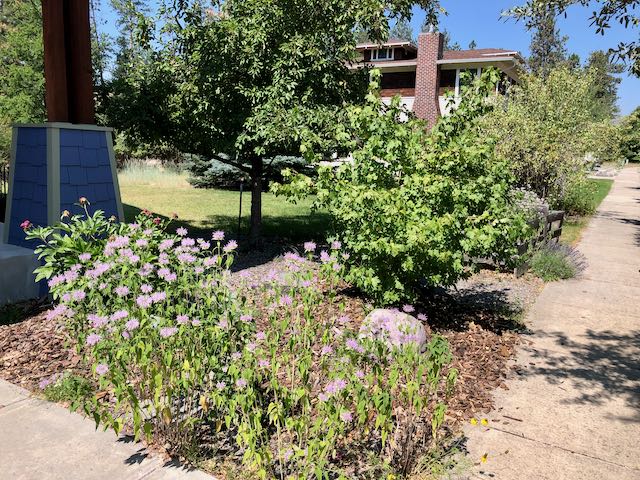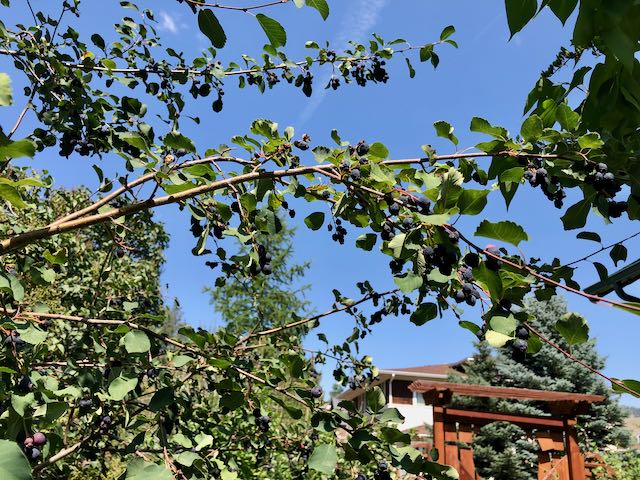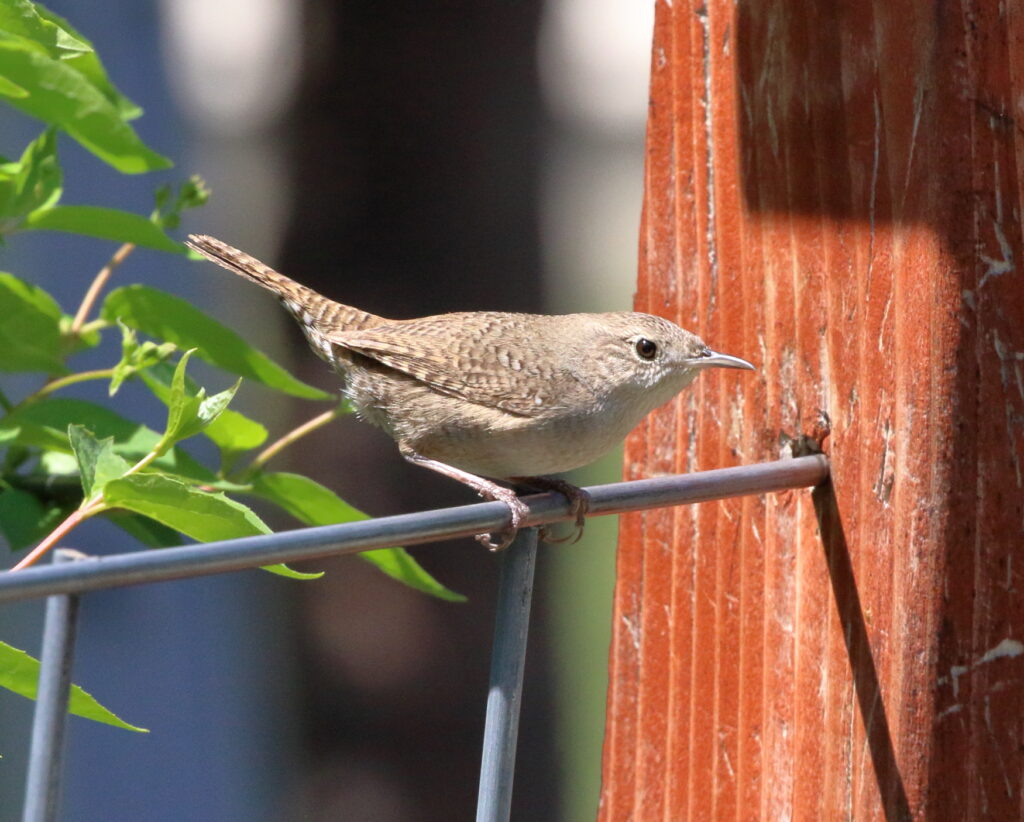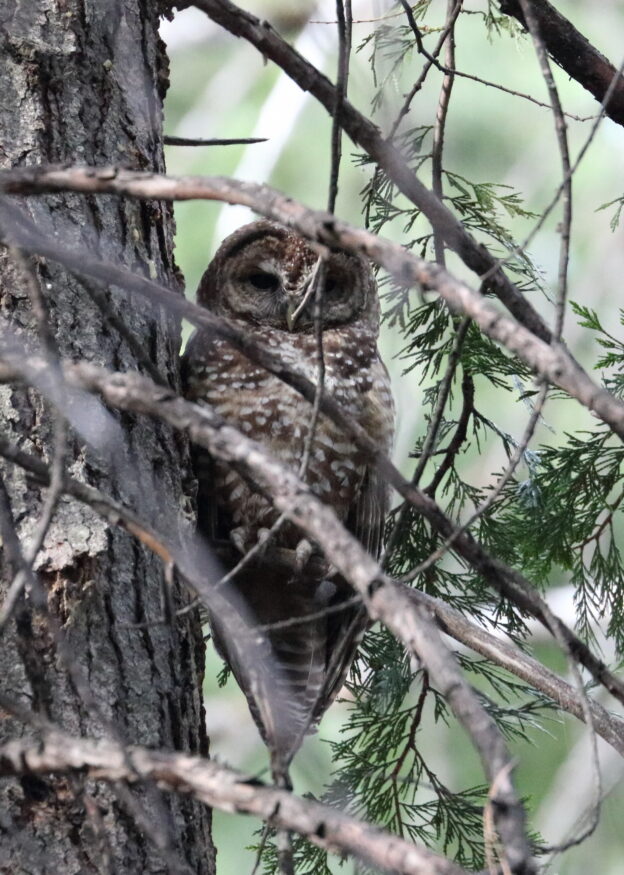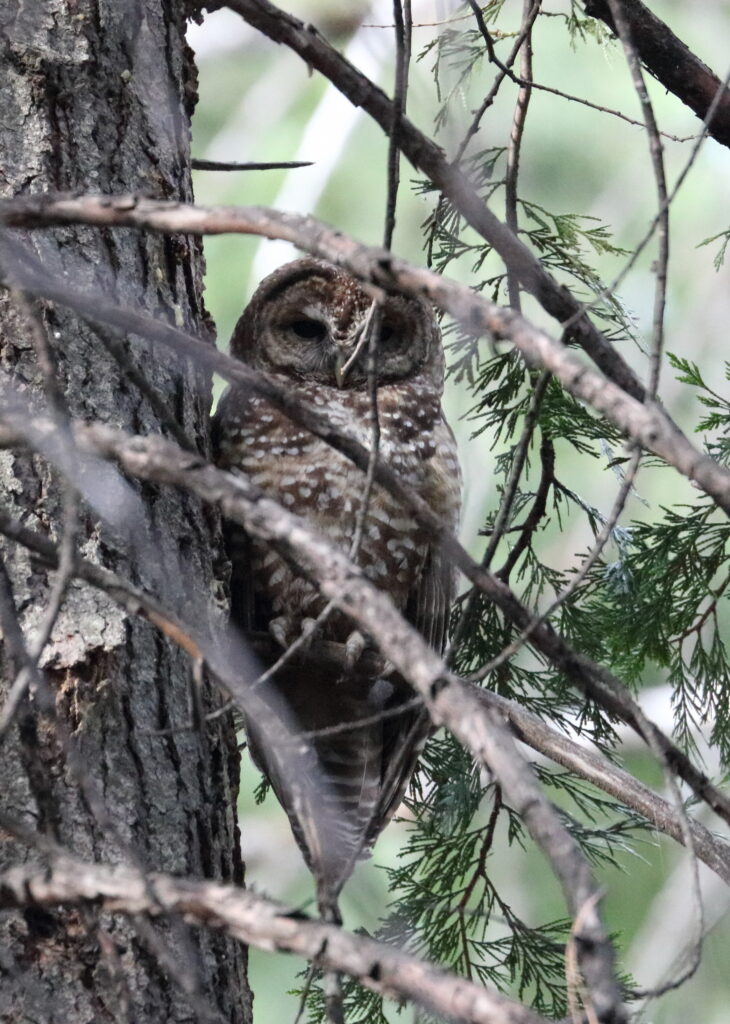My success finding Black-capped Vireos and Golden-cheeked Warblers (see our last post) left me a welcome gift: an extra day to pursue another bird that keenly interested me. It was a bird Braden and I had unsuccessfully tried for on our 2018 trip to the Lower Rio Grande Valley: Morelet’s Seedeater. Though not rare in its core year-round range of Central America and eastern Mexico, this adorable “finchy” songbird just barely creeps over into the US along the Rio Grande Valley.
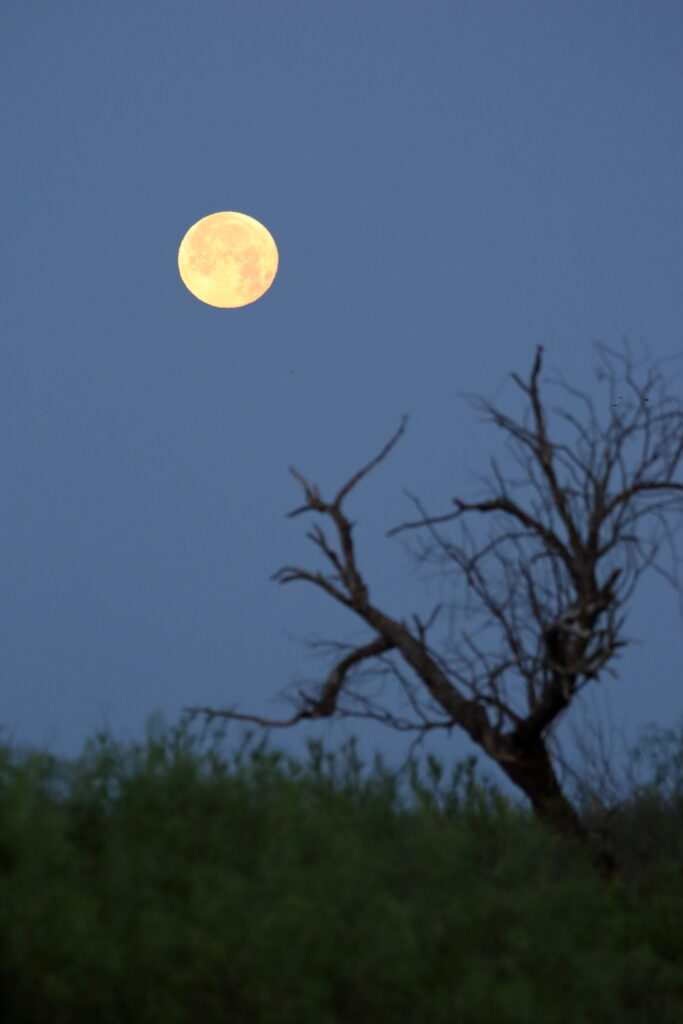
Sunday morning, I rose at four a.m. and headed south from Uvalde. As they had on the previous morning, both a spectacular sunrise and unforgettable setting full moon rewarded me. As light crept over this flat country, caracaras flew along the road and Scissor-tailed Flycatchers perched on telephone wires. I even got a glimpse of a flock of quail leaping over a fence. Scaled Quail? I could only guess! After ninety minutes, my little highway joined Interstate 35.
And that’s where the trouble began.
I-35 is a main artery for trade between Mexico, the US, and Canada. As I sped south, I kept seeing signs for Mexico, but my map app directions assured me that I should keep going and turn off at an exit called Riverbank Drive. As I kept driving, however, I saw no signs for that—or any other—exit, and I realized that the only other traffic around me consisted of huge 18-wheelers. Finally, a thought occurred to me: Uh-oh.
Soon I found myself at a dead stop, surrounded by big rigs, with no way to turn around. There are moments in life where you know you are in a fix, and there’s not a thing you can do about it. This was one of those. Still, hope springs eternal and I climbed out of the car and walked to a big rig next to me. The kind Mexican driver, undoubtedly flummoxed by what I was doing there, rolled down his window, and we had the following conversation:
Me: Uh, I think I made a mistake. I’m trying to go to Laredo.
Driver: Laredo, Mexico?
Me: Uh, no. Laredo, Texas.
Driver (looking worried for me): You’ll have to turn around.
Me: Where?
Driver (after conferring with his partner): I don’t know.

It was then that I began pondering the frightening ramifications of entering Mexico without a passport. I mean, could I have picked a worse time in history for this to happen??? The only good thing was that a Scissor-tailed Flycatcher perched nearby, blissfully unconcerned by my human drama. A few minutes later, the border opened and I eased in front of my new trucker friend. For ten minutes I and the big rigs inched forward until we reached a wide No Man’s Land of pavement and there I spotted an actual border worker. I pulled up next to him and explained my mistake. Looking vaguely amused and overly patient, he said, “See my buddy back there? Turn around and he’ll keep the trucks stopped while you exit at that road on the side.” I proceeded as instructed, gratefully waving to the “buddy.” I could have burst into tears at this point, but instead, I laughed all the way to the next exit—the real exit—which led to my original destination, Father McNaboe Park.
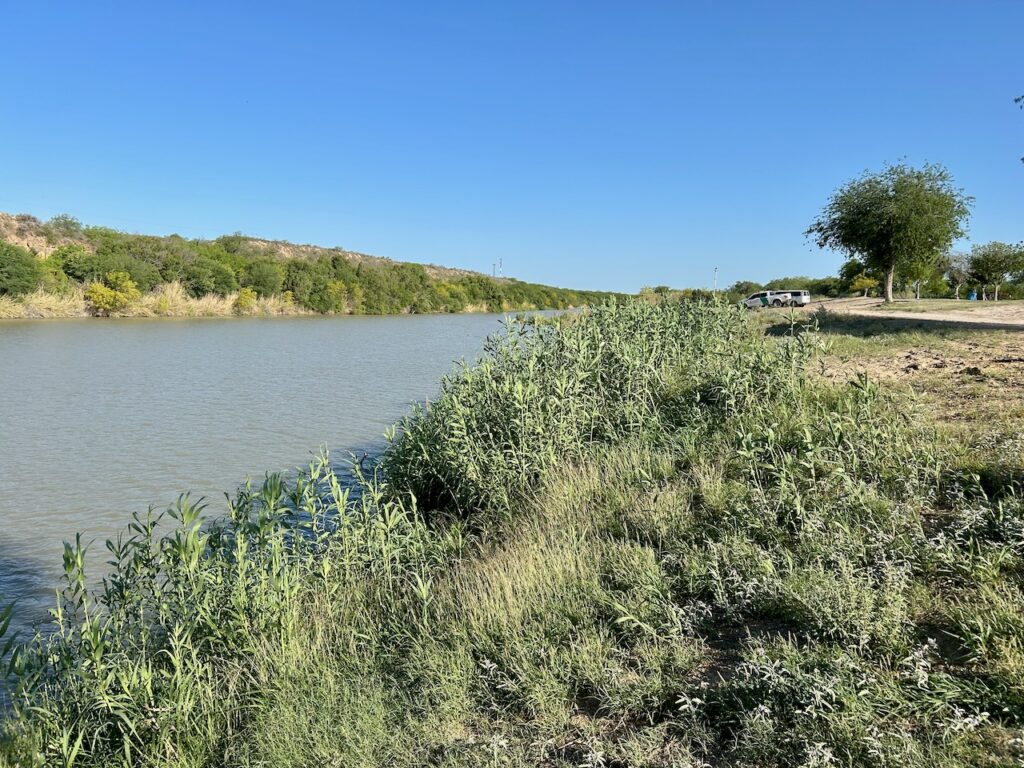
By the time I reached the park, I had experienced a week’s worth of drama, but remember, I still had some serious birding on the agenda. In 2018, Braden and I had visited the Lower Rio Grande Valley (LRGV) and even spent a night in Laredo, but had somehow failed to find McNaboe Park. I don’t know how, as the park consisted of a wide, long swath of trails, playing fields, and other amenities right on the Rio Grande River. Today, the park was jammed with people and I felt at ease as I walked toward the river. Before I even got there, I spotted my first great birds of the day—a pair of Hooded Orioles, a species I hadn’t seen since visiting Southern California seven years before. Not long afterward, I saw another oriole, a Bullock’s Oriole—perhaps on its way to Montana?
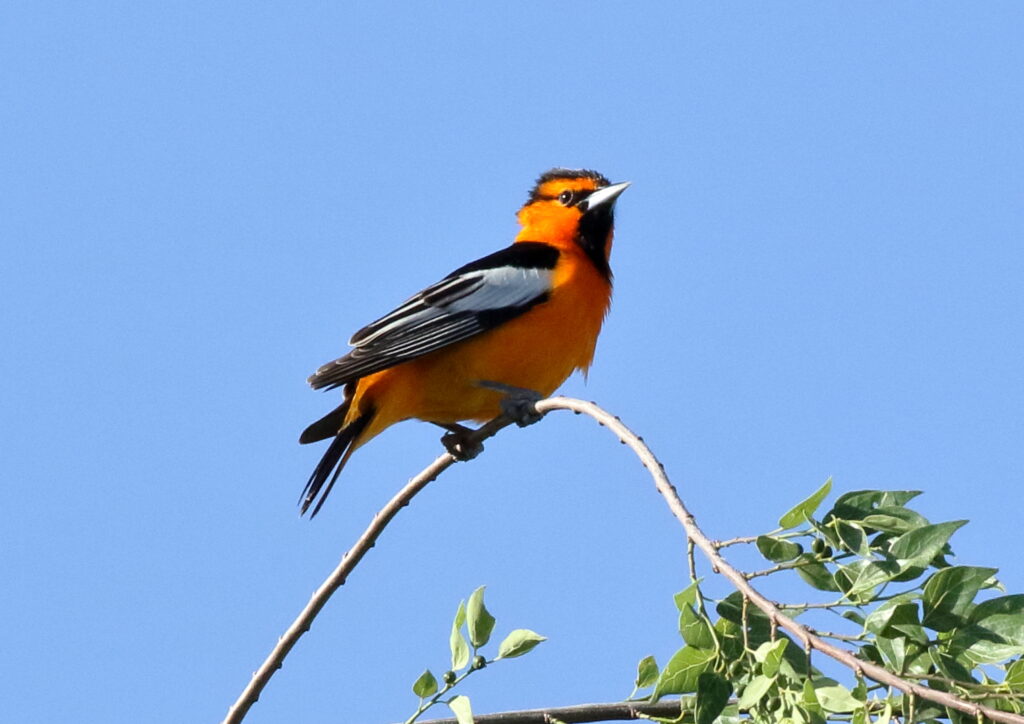
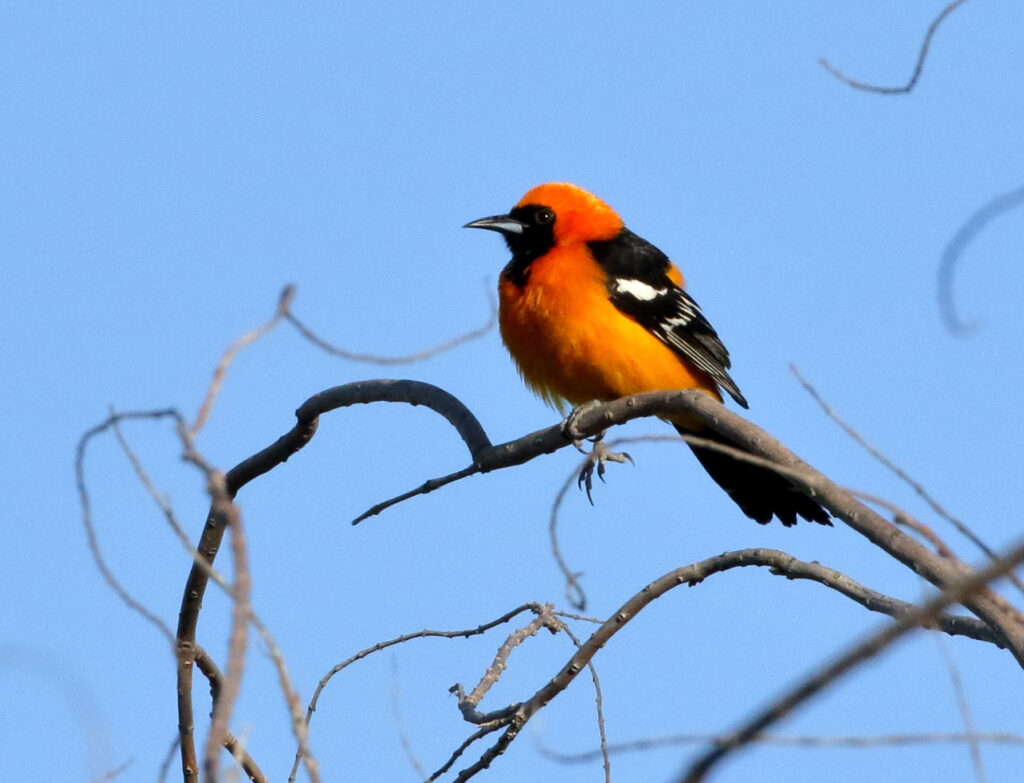
Over the phone the night before, Braden had told me to look for the Morelet’s Seedeaters in the “cane grass,” a tall invasive species known in Texas as Carrizo cane. Apparently, this plant can be found all along the 1,255-mile reach of the Rio Grande, and it didn’t take me long to find thick stands of it. I began walking along them looking for little black and brown birds. I covered a couple of hundred yards without seeing any and then walked down to a little sandbar right at river level. No seedeaters.
Then, I happened to glance up a side channel at another thick stand of cane. There, perched on one of the stalks was an erect little bird with a finchy bill. I didn’t get my binoculars up in time to get a good look, but I immediately knew: I had found my bird!
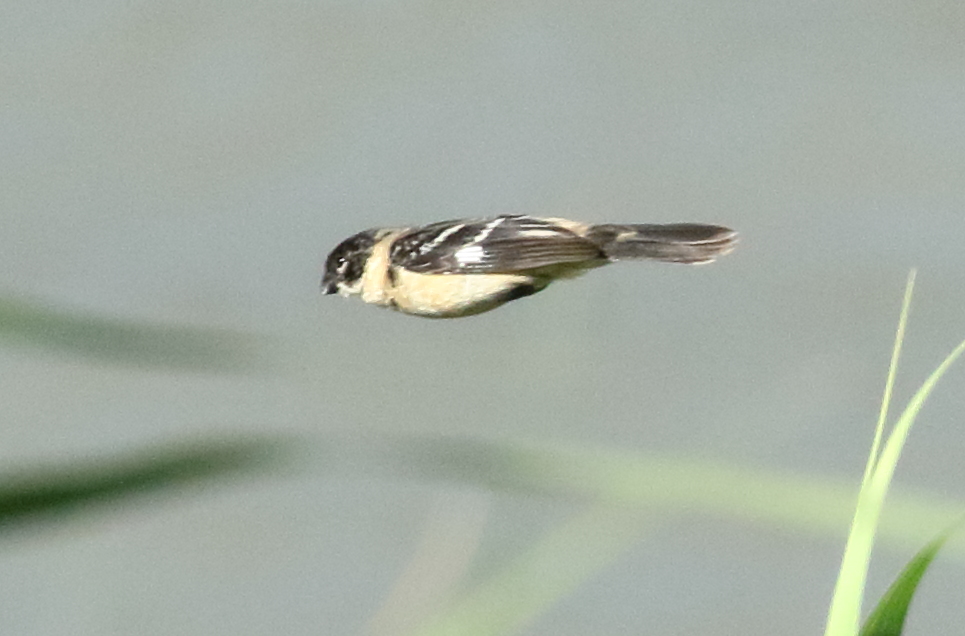
Of course, that didn’t keep me from wanting better looks, and for the next hour or so, I walked various paths and channels. I got to know the bird’s song and it wasn’t long before I was hearing and seeing more of these cute little guys. They were pretty shy, but I managed good looks—and saw some other great birds as well. These included a pair of Black-necked Stilts, a Spotted Sandpiper, a Green Heron, and even a lone Mexican Duck in the middle of the river. Not including the seedeaters, the show stoppers, as usual, were a pair of Vermillion Flycatchers.
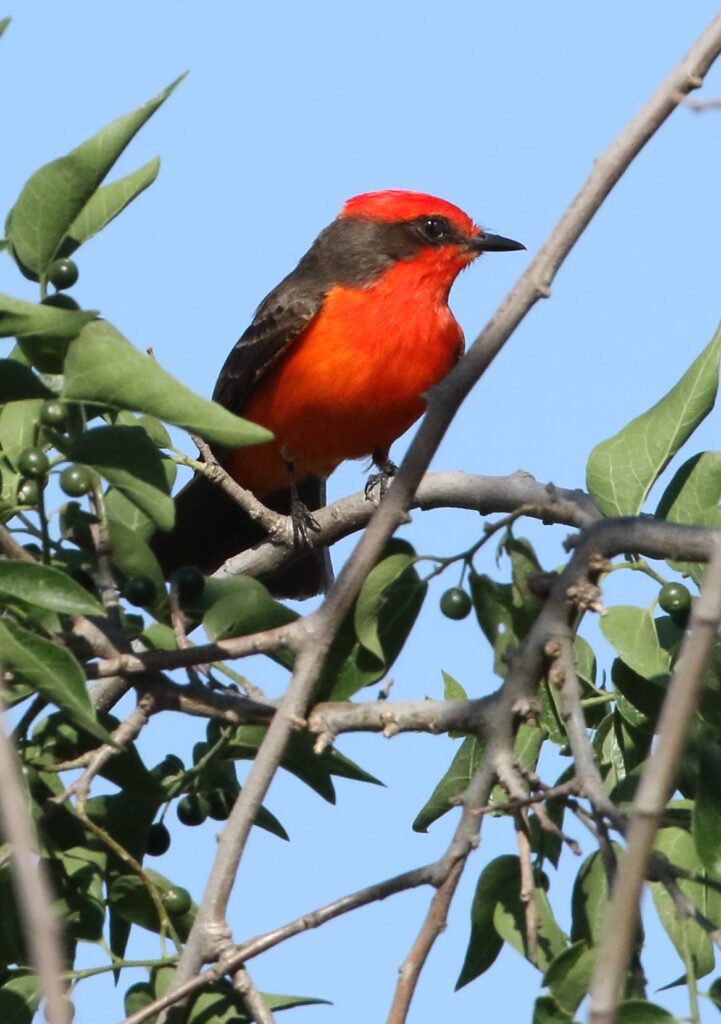
After a late breakfast at the French restaurant McDaniels, I decided to hit one more park in Laredo—North Central Park. Remarkably, I had failed to find a Golden-fronted Woodpecker so far on the trip, and though the heat was comin’ on fast, the park had abundant sightings of them. It took only five minutes to hear and then see one of these handsome birds and, walking a couple of miles or so, I also added Great Kiskadees and Bell’s Vireo to my trip list. Then, before I inadvertently wandered toward Mexico again, I turned tail and headed back up I-35 for San Antonio.
Link to my Texas Trip Report: https://ebird.org/tripreport/351263
Total Number of Species for the Trip: 144
My Top 6 Trip Birds:
Least Bittern (see post “Anahuac Lifer Attack”)
Yellow-throated Warbler (see Texas Hill Country post)
Black-capped Vireo (see Texas Hill Country post)
Golden-cheeked Warbler (see Texas Hill Country post)
Morelet’s Seedeater (this post)
Yellow-throated Vireo (see Peveto Woods post)
